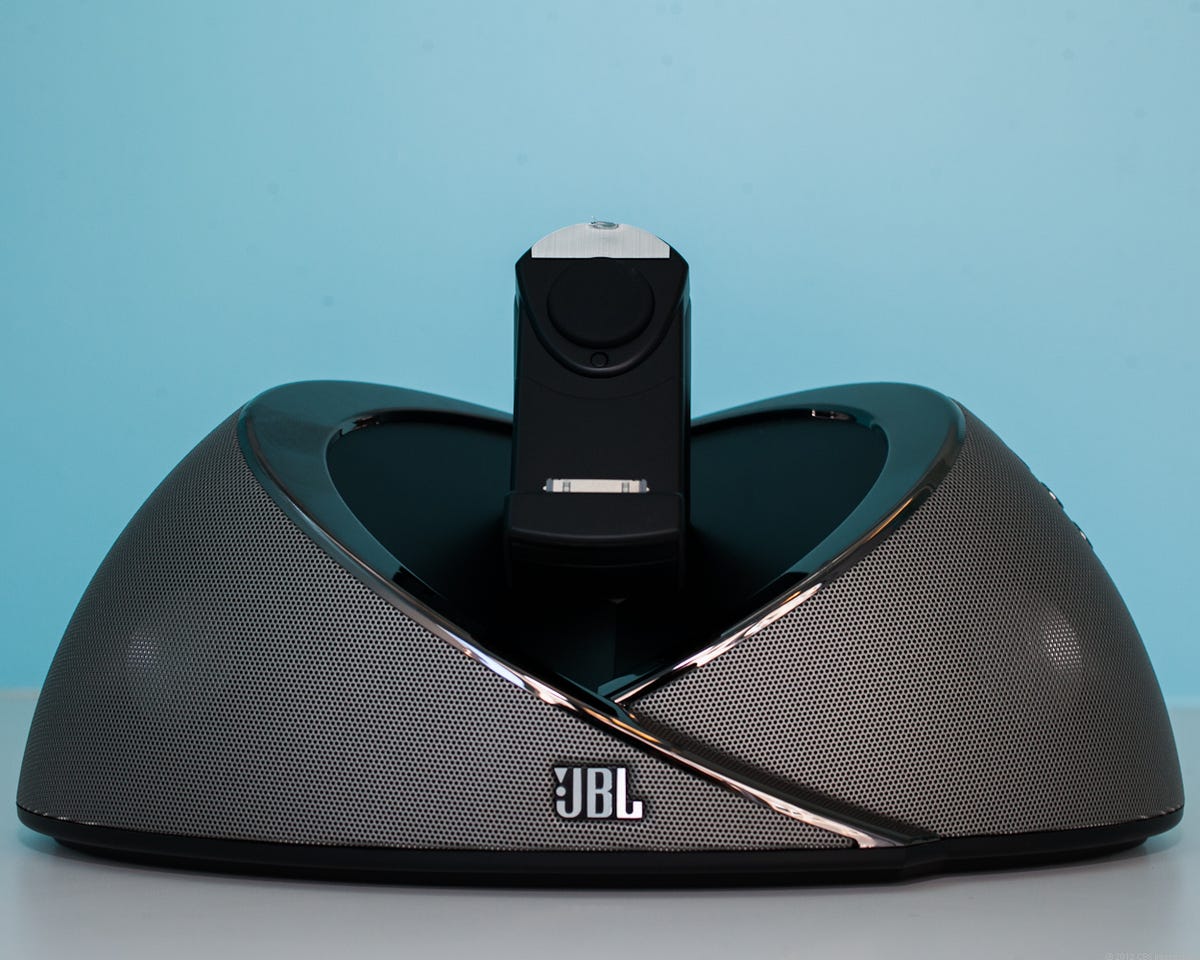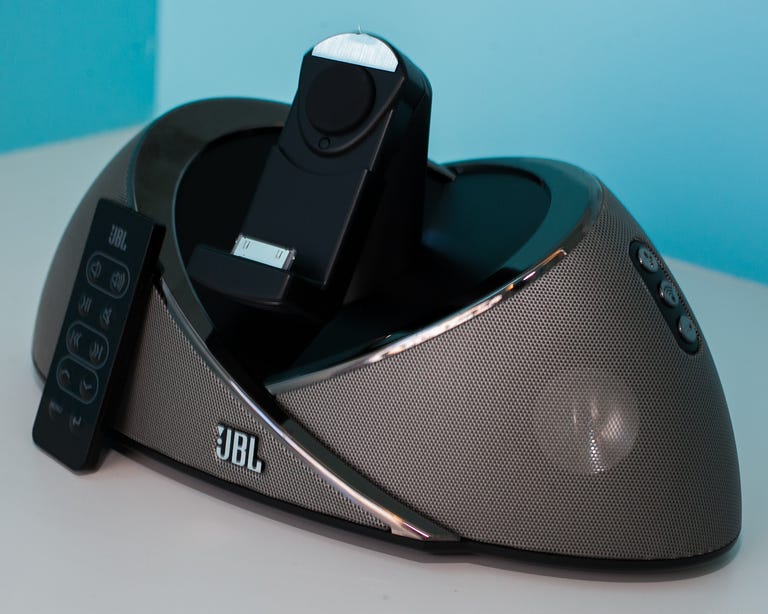A few months back I reviewed the
The Good
The Bad
The Bottom Line
I'm telling you this up front because, well, the OnBeat Air is basically the same product as the OnBeat, with identical sound quality, but with one key added feature: support for wireless AirPlay streaming from any of Apple's compatible devices, including the iPhone, iPod Touch, iPad, and even any Mac or Windows PC running iTunes.
While this product isn't nearly as good as the much larger
Design
Like its bigger and better-performing brother, the OnBeat Xtreme, this model has one of those designs that you're either going to love or find a little off-putting. The front looks a little like the top of a woman's formal dress and the chrome around the dock makes a heart shape.

While the OnBeat Air seems fairly well built, it does feel pretty light, and can be picked up easily enough, which some will view as a good thing. It's just not a luxurious, high-end product like the OnBeat Xtreme, but it does cost much less at around $200, so you can't expect it to be.
The OnBeat Air features a 30-pin Apple dock that, as usual, recharges docked devices. As noted above, the dock rotates so you can put your iPhone, iPod, or iPod Touch in portrait or landscape mode for movie-watching, but a docked iPad needs to stay locked in the vertical position. JBL throws in adapters for iPads and iPhones that make your specific device sit more securely in the dock.
The dock works with the original iPad, the iPad 2, and the
It should also go without saying that the speaker looks very different depending on what, if anything, is docked in it. I preferred the look when the iPad was docked; an iPhone or iPod Touch looked comparatively out of place.
Features
The OnBeat Air doesn't have Bluetooth for wireless streaming like the OnBeat Xtreme, but it does offer AirPlay support and a few extras in the features department. AirPlay audio streaming, in case you don't know, is available through iTunes on both Mac and Windows computers and works for nearly all audio applications on iOS devices.
Before I dig into the AirPlay feature a bit more, let me highlight some of the other extras. For starters, there's a composite video output so you can run video from your docked iPad, iPhone, or iPod, to your TV using an optional cable. Alas, that video connection is composite, which means the video quality will not be terribly good (think VCR-quality at best).
It's also worth mentioning that there's a USB port around back that allows you to sync a docked iPod, iPhone, or iPad with iTunes on your computer (yes, your computer does have to be nearby for the included USB cable to reach it).
The included remote is your basic small, plastic type that controls the music playback functions of your iOS device: pause, skip track forward and back, and volume control. In other words, it's nothing special, but it is functional. It's also small enough to be easy to lose. On the other hand, if you're using the AirPlay feature, the device you're streaming from -- the iPad, iPhone, or computer -- is presumably in or near your hands, which obviates the need for a separate remote.
OK, on to AirPlay. Setting it up on your iOS device is a relatively straightforward affair, but it's not as easy as pairing a Bluetooth-enabled device with a speaker, and you will have to consult the manual to get everything working properly. The thing that's a little tricky is that you have to "log in" to the JBL OnBeat Air from a browser URL on your phone, tablet, or laptop, and set the speaker to connect to your home or office Wi-Fi network (both the speaker and the device you're streaming from must be connected to the same Wi-Fi network). As I said, it's not that big a deal, but it is an extra little step that may be confusing to some users.
Once you do have everything set up, you simply tap on the AirPlay icon on your music player and select the OnBeat Air as the target, and within seconds the music will switch from playing out of your device's speakers to playing out of the OnBeat Air. The good thing about AirPlay and Wi-Fi streaming is that your music doesn't get compressed at all like it does with Bluetooth. That matters less with a smaller speaker like this, but it will still make a small difference in sound quality.
Performance
As I said about the OnBeat, this speaker didn't blow me away with its sound, but for its size and price it's decent; most people will be impressed. JBL touts its "dual Phoenix full-range transducers with computer-optimized DSP equalization" that deliver "legendary JBL sound." That's pushing things a bit, but it does play loud and offers reasonable detail and can fill a small- to medium-sized room with sound.
Where OnBeat Air falls a little short is on the low end: there's just not a ton of bass here. And even with the JBL's digital processing, you just don't get a whole lot in the way of stereo separation. That's par for the course with these types of speaker docks. To be clear, as far as sound quality goes, the OnBeat Air is nowhere in the same league as the OnBeat Xtreme. That model has much bigger sound, more detail, and much bigger, tighter bass.
When I reviewed the OnBeat, I said the sound was a small step up from that of the
Conclusion
As far as entry-level AirPlay speaker systems go, this JBL offers pleasing sound for its size and is relatively affordable at $200. As with the OnBeat, I wasn't in love with the design and didn't like the fact that you can't rotate your iPad into the horizontal position for movie watching. But aside from those nitpicks, it's a decent little system, just not one I'd rave about and tell you to sprint out and go buy at this price.



